Ten biggest threats to business

A global survey has given us a picture of what exactly the biggest challenges are for business managers today. Across categories and regions the message is the same – there are half a dozen particular issues companies are feeling pressured by, but don’t know how to deal with.
Those clever marketers at Ernst & Young have come up with a catchy way of showing what we’re all facing – they call it the Risk Heat Map.

Businesses of every size are facing the same big problems. Fortunately current research shows how your business can turn this time of rapid change to your advantage.
The real insight for business owners in this picture is that while managers recognise these risks, as we look across the Y axis we realise most don’t know how to deal with them. These challenges are the consequence of a new paradigm. There’s an elephant in the boardroom – it’s right there in the middle, emerging technologies. Yes, it’s the Internet.
Drivers of business change
The Internet has changed everything. For the first time in the history of commerce, we now have true globalisation thanks to the transparency the Internet gives customers. People can now find the truth about any product or service in just a few clicks, in the privacy of their home or using a smart phone on the shop floor.
In the recent past there was still an advantage in being big – a manufacturer could configure a product and control its availability by region, a retailer could price a product depending on the suburb. Today with instant transparency, a customer can pick and choose from what’s on offer anywhere in the world.
Brands can no longer rely on any competitive advantage from tradition, size or resources. Rather, as Boston Consulting says – “in a world of change, the spoils go to the nimble”. The key to success is not just recognising the drivers of change, it’s ACTING on them.
The biggest risk to any business today is inaction. UNO has a proven formula for growing challenger brands. We can help you start today, risk free.
Email gm@unomarcomms.com for an outline of our process.
Read MoreWhat is beauty in commercial art?

“We have a duty to keep ads beautiful” said Craig Davis, co-chairman and chief creative officer with Publicis Mojo Australia and New Zealand in Campaign Asia, yesterday.
I respect Craig, we pitched against each other for The Rocks account decades ago when we were young and radical and creative directors of competing boutique Sydney agencies. I won. The next year I pitched against him again, for Sydney Water. He won.
Personally I don’t think advertising is art. It’s Commercial art, capital C. The latest CEO survey published in the same magazine reports 80% of the region’s CEOs think marketing people “are in La-La Land”.

Craig’s musings on beauty in advertising aren’t going to change those perceptions. He is concerned “talent, craft and significance of ideas are being pushed aside by the desire to save time and money.” Craig makes a point worth taking the time to consider – we have all seen examples of the office junior being asked to whip up an ad because they know how to use clip art and can have it done in no time. Or the manager’s nephew is good with computers so he can build the corporate website for less.
All of this is being driven by the changes enabled by the Internet, “the flip side of the new digital meritocracy is that there’s an inordinate amount of noise generated” observes Craig.
He reminds admen “clients pay us to deliver results.” Hear, hear I say.
Then he returns to his point that “at its best, advertising is beautiful, but in the absence of creativity, it is just pollution. In the words of John Keats: Beauty is truth, truth beauty—that is all ye know on earth, and all ye need to know.”
Advertising that works is advertising that delivers a ROI
Business owners are more inclined to see beauty in numbers, like low cost per lead, and high rates of conversion. The fine balance of marketing communications is understanding how to use creativity to commercial advantage.
There is undeniable beauty in identifying a genuine human truth and expressing it to an audience in a way they find appealing. But let’s not talk about beauty for its own sake, lets talk about craft. Both in the craft of storytelling and execution, for business sake.
A century ago Dadaists like Marcel Duchamp challenged the protectors of traditional painting with the question “What is art?”
Before you invest in advertising, social media marketing or any program to grow your business, ask yourself, is this commercial art for the 21st Century? Is the execution well enough crafted to connect with your audience and leave the desired impression? Most importantly, will it give you the best return on investment?
It’s a commercial decision after all, not a beauty contest, don’t you think?
Why CEOs like Facebook yet fear it

The 2012 IBM global CEO study is just out. It once again confirms management is often aware of what needs to change, yet fear acting on their knowledge.
"CEOs need social media, but many fear it" – IBM
The world’s CEOs believe that in the next five years social media will push past websites, call centres and channel partners to become the No. 2 way to engage customers (after face-to-face communications).
However fear of change is preventing most from actually actioning a Facebook strategy. Many will miss capitalising on this inevitable trend to more agile competitors. Some fears are justified, there is no doubt there is risk involved with social media. Risk isn’t just bad ideas like CommBank’s terrorist Olympics viral video.
Advertisers are now liable for users' Facebook comments

Australia's digital industry is up in arms about a ruling from the ad watchdog, which determined a brand's Facebook page is an ad platform with all its material - including user-generated content - liable under the AANA code.
A recent ruling from the Advertising Standards Bureau (ASB) in a complaint against Diageo said it considered Facebook to be a marketing communication tool. The decision changes the landscape of social media advertising with brands liable for content generated by consumers.
In its ruling, the ASB wrote: “The Board considered that the Facebook site of an advertiser is a marketing communication tool over which the advertiser has a reasonable degree of control and could be considered to draw the attention of a segment of the public to a product in a manner calculated to promote or oppose directly or indirectly that product."
Social media advertising regulations and marketing your business
“The Code applies to the content generated by the advertisers as well as material or comments posted by users or friends.”
This is yet another example of how our regulatory frameworks are anachronistic in the era of the Internet. This new world of social media is merely a decade old, yet regulators like ASB are employing codes written in the steam age when ads were only mass distributed by printing press. Publishers had control of what letters to the editor were published with an eye on libel. But the pace of public postings on Facebook makes such a process for an editor of a business Facebook page less that of a publisher, more one of the town crier who invites people to the town square but can’t predict what the crowd will yell about loudest.
Right now the judiciary has similarly lacked an ability to adapt as the public circumvents contempt of court rules and out accused on Facebook, passing collective judgement before a trial. No blurred pictures of the accused’s face like in the press or on TV. Think the Kings Cross king hitter, perhaps fuelled by Diageo products. Lets see a post on a liquor brand’s Facebook about the next alcohol induced murder and ponder the consequences. It's going to happen, irrespective of what the ASB stipulates.
So if CEOs are going to increasingly use Facebook for a dialogue with prospects, we will need to be extremely diligent to keep on the right side of the law, irrespective of how sensible we think regulations are today.
Learn from Darrell Lea's Rocky Road

Darrell Lea's new Perth concept store opened in March. Too late to keep the administrators from the door?
Most business leaders know the 4 Ps from marketing 101. As Darrell Lea’s predicament shows, in today’s marketplace where change is underway at an increasingly blistering pace, keeping those easily understood basics working in your favour is becoming increasingly difficult. Here they are one by one:
Product
Mega trends like multiculturalism, gourmetisation of food products, better for you choices, and social issues like fair trade today shape what we choose to eat.
In the past it was enough to make minor adjustments to products and expect a sales lift simply by placing a NEW IMPROVED flash on the wrapping. For the last couple of decades there’s been little in the way of product innovation at Darrel Lea. As well intentioned as they may have been, small line extensions like fruit flavoured liquorice haven’t been enough to stop the sales decline.
Businesses have to be wary of who they entrust to give them independent counsel. Darrell Lea invested in research that resulted in a new tag line, “85 years of creating sweet magic”. One can argue this simply reinforced a backward looking management mindset.
Today customers are rewarding brave leaps forward in categories. As Max Brenner’s website proclaims, “Chocolate is not just about taste” it’s also about fashion. From Mexican spicy chocolate and hot chocolate shots to chocolate soufflés and Tiramisu, Australians are spending more money on chocolate than ever before as brands can come up with new adventurous ways to tempt them.

Challenger brands aren’t just new companies doing new things, old companies doing things differently are also being rewarded. Australia’s oldest chocolate maker/retailer, 97 year old family business Haigh’s has kept customers coming back and continues to entice new ones with adventurous new takes on chocolates.
Promotion
Cutting back on advertising for a short term cost saving is proven to come at a long term significant loss. Once a significant investor in advertising, Darrell Lea has been absent from mass media marketing for several years. It takes many years to build a brand and nanoseconds to damage one in social media. It pays to treat advertising as a compounding investment that pays an annuity in return.
Price
Too often price is only mentioned in the same sentence as promotion. It is in fact a two way lever. A 4 for $15 offer on Rocklea Road isn’t going to entice a new customer, it simply reduces the margin on a sale to an existing one.

Whereas Lindt, once considered a niche special occasion brand, has grown by offering a variety of chocolate balls across a range of pricepoints and product sizes that still maintain a premium.
Place
The Internet is making everyone reconsider where is the best place to make a sale? Ecommerce may not be right for a product that will melt in the mail, but is owning a shop the best alternative? Why own 63 shops when most chocolate sales are through Coles and Woolworths and convenience stores?
If you are going to have a retail outlet, it needs to have a good reason to justify the high overheads. Darrell Lea’s average over the counter sale is around $11 per customer. You’d need a lot of footfall to justify the rental on the King and George Street Sydney store. On the opposite corners are the eye candy Apple store and Louis Vuitton, where the products cost thousands (and are never discounted).
Challenger brands understand stores are the new 3D interactive ad medium. They are all about theatre and entertainment. Max Brenner has the theatre of their liquid chocolate Willy Wonka-esque stores.
Other retailers realise the store is simply the best way to gather new customers details for database driven online sales. The objective of the shop front is to entice prospects in and the brief to staff is to start a long-term relationship. For instance, banks lose money on physical branches, but haven’t found a better way to gain new customers. Citibank’s new branches in Hong Kong have been designed by the same architects as the Apple Stores. You can’t make a deposit at one of these new gleaming white banks with couches and interactive screens, you can have an espresso made by a barrista who is briefed to cross sell financial products to you.
How to stay competitive
Many market leaders are vulnerable to the threat that comes from failing to re-look at their entire business models. Simply reviewing the 4 Ps from the perspective of traditional wisdom will no longer ensure a business stays competitive. Market leaders that fail to embrace change, not just across product and service but entire systems and relationships, are increasingly less profitable than smaller challenger brands. There are a number of proven tools and techniques to help businesses rapidly adapt and trial new ways, feel free to ask us about some of them.
Boston Consulting has formally identified what savvy marketers know is the driver of business growth today:
In a world of change, the spoils go to the nimble*
*Martin Reeves and Mike Deimler, Boston Consulting Group,
Harvard Business Review July-August 2011

Founded in Adelaide by Alfred E Haigh in 1915, Australia’s oldest family-owned chocolate maker/retailer has a history of embracing change.
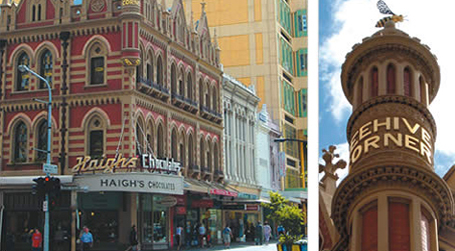
In the 1950s grandson John learned from Swiss masters Lindt and Sprungli and introduced European fine chocolate making to Australians. The current fourth generation Haigh family management preside over a business that represents barely 1% of Australia’s chocolate sales. Yet I would venture to say they are very profitable.
By continuing to innovate Haigh's continues to prosper as a challenger brand
Their award-winning Australian Collection was launched in 2003, with six native food centres including quandong, macadamia nut and honey, lemon myrtle and wattle seed. And as Australian’s have become more sophisticated in food tastes, Haigh’s have kept up with such adventurous chocolates as a South Australian truffle duet made with premium wines from the State’s wine regions.
Haigh’s environmental policies and sponsorships are just one indicator of how in touch this old business is with today’s consumer.
Last August at the Family Business Australia Conference, Joint Managing Director Alister Haigh told me they were ready for the next big change - online sales. The only sticking point is developing a delivery method that can guarantee the integrity of their heat sensitive product.
Following the biggest fine in UK finance history, it’s timely to look again at Barclays’ Big Ad

Barclays agreed to pay a record $442 million fine for rigging the London interbank offered rate last month. The scandal has cost the jobs of Barclays CEO Robert Diamond (below), Chairman Marcus Agius, and Chief Operating Officer Jerry Del Missier.
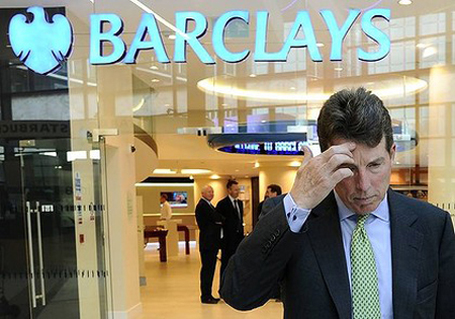
It pays to consider the future consequences of a single-minded marketing tagline. For Barclays, “We’re Big” just doesn’t cut it anymore.
If you're a marketer, Read This Or Die...

A friend sent me a YouTube link via Facebook – a comedy sketch by Bill Hicks, where the comedian asks anyone in the audience that’s in advertising or marketing to “kill yourself".
I was reminded of my profession’s tenuous grip on social acceptance when this week leading researchers Roy Morgan released their latest annual survey of how Australians rate the professions: ad people are still near the bottom, just above car salesman.
There is still hope for Admen and marketers – it’s about having conversations at the board level that explain in understandable terms how we can add value. This week McKinsey Quarterly published a checklist of 5 things that will help business managers get the best ROI from their marketing.
So for those who rate the wisdom of McKinsey's consultants, here in my words are the 5 tips that will make any CEO take you seriously.
1. What exactly influences our consumers today?
Mass media marketing to the masses is oh so yesterday. Thanks to the Internet, shoppers now consider options at more times in more ways, from reading online reviews to comparing prices when in-store using their mobiles. Once someone has bought something, they potentially become a reviewer themselves.
So how do you get into the new consumer's head? You can use anything from traditional research to online polls or social media tracking to get a better understanding of what consumers are now thinking about a category. The key is to be open minded about what you learn and have a management team willing to let go of accepted wisdoms.
2. How well informed (really) is our marketing judgment?
It was only a decade ago when traditional advertising was all that mattered. Marketers who new their stuff could make decisions safe in the knowledge what always worked in the past probably would tomorrow. And planned accordingly. Today you have to be able to recognise signals of change, and act on them. This means managers have to move out of their comfort zones and hypothesise, test new ways, then measure, analyse and adapt. Again and again. In McKinsey’s words there has always been a a need to define a “clear relationship between marketing spending and business results”. Today it has shifted from “should we be spending on marketing at all?” to “what’s the optimum marketing spending needed to hit our targets?”
3. How are we managing financial risk in our marketing plans?
Successful marketing communication takes hitting the right audience with the right message at the right time. The difference today is the targets are increasingly individuals and they are moving faster than ever. Traditional mass media allows advertisers to minimise risk by using metrics based on years of surveys that measure frequency and impact of a particular medium. Not so now. With today’s new media “influence can shift rapidly, and there is little accumulated experience about which messages work, when marketers should apply them, how they can be scaled, or even whom they influence”.
Measurement and risk reduction today comes from a closer relationship between sales and marketing and the channel. One of our clients has found scan data has new meaning now it can be overlaid with pre and post campaign brand tracking and the incredible analytics available using Shopperpedia.
4. How are we coping with added complexity in the marketing
organisation?
If you think it’s hard to keep up now, it’s only going to get harder faster. McKinsey's unsurprisingly suggest “you’ll require a number of specialists. You can’t get the skills and knowledge you need in just one person, and you’re not likely to get everything you need internally”.
5. What metrics should we track given our (imperfect) options?
At this point McKinsey goes into a whole grab bag of consultant speak. At UNO we think it best to get back to business basics – success should be measured by profit, not volume of sales or market rank. A business is successful when it can compete on more things than just price. And it knows it’s a real challenger brand when staff and partners are aligned and customers are referrers.
Now if you’re in advertising or marketing and you can’t get your head around the idea you have to change to survive, take a couple of minutes to laugh out loud as Bill Hicks encourages you to kill yourself
Where the smart budgets are being spent...Social Media
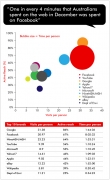
Have you noticed over the last decade that just about anything that isn’t nailed down has been digitised. Today we can access nearly everything from anywhere on anything – from getting the news on a tablet, trading shares on a mobile or accessing software services from the cloud. Plumbers are relatively safe, but most other businesses have to change.
The difficulty for business managers though is not just deciding how to make the change to digital, but how to make money out of it...
Pew Research Centre in the United States found that digitisation is burning money
Newspapers lost $10 in print ad revenue last year for every $1 they gained online. Just five companies, none of which existed a couple of decades ago are now taking 68% of online ad revenue: Google, Microsoft, Yahoo, AOL and Facebook.
Marketers know that they need to integrate traditional mediums with digital. Few businesses actually do – and some still think online is primarily for brands with young customers.
Businesses may be surprised to discover that the place where Australians spend the most time online, is also the most popular with women 25-45 years old.

The papers continue to spend money on journalists and creating the content, while these new companies continue to grow their revenue off the papers’ labours. Now because of their growing databases, fuelled by an understanding of people’s behaviour and preferences gathered from social media use, the digital intermediaries can now target ads more precisely than the old publishers.
The things we can now do on Facebook are incredible. In the past only advertisers who could afford to buy expensive data and research could precisely target their consumers. Now any advertiser can pretty well plan as effectively as the global giants by tapping into the growing wealth of intelligence of the social media technologists.
The Pew report says: “Two trends in the last year overlap and reinforce the sense that the gap between the news and technology industries is widening. First, the explosion of new mobile platforms and social media channels represents another layer of technology with which news organisations must keep pace. Second, in the last year a small number of technology giants began rapidly moving to consolidate their power by becoming makers of 'everything' in our digital lives. Google, Amazon, Facebook, Apple and a few others are manoeuvring to make the hardware people use, the operating systems that run those devices, the browsers on which people navigate, the e-mail services on which they communicate, the social networks on which they share and the web platforms on which they shop and play. And all of this will provide these companies with detailed personal data about each consumer.”
Business journalist Leon Gettler points out “Newspaper groups like Fairfax are the canaries in the coal mine for other industries facing similar challenges, from book shops and publishing to health care, industries where barriers to entry are low and where information is the main product. The trend to digitisation will accelerate with 'Generation C', people born from 1990 on who expect to be constantly connected through every possible device now entering the workforce, and with costs of computing and technology equipment dropping.”
“In every organisation, from media to retailers like David Jones, Myer and Harvey Norman, the biggest challenge always comes down to the tension between those who advocate a more aggressive approach and those aligned with legacy traditions, those who want to go fast and those who want to slow down.”
Adaptability: the new competitive advantage
As the pace of change accelerates, adaptability becomes the new competitive advantage. Long established leaders like Kodak, Borders and Fletcher Jones are a lesson in what management can expect if they don’t change their business model to integrate digitised marketing with their traditional methods.
Sources: Leon Gettler, Business Spectator, 28/3/12
Pew Research Centre, How Newspapers Are Faring Trying to Build Digital Revenue, 5/3/12
Why are marketers using Smartphones today?

The answer is in the numbers, and is a pointer to the next big thing.
Google researched 300,000 people around the world to find out their Smartphone use. Now as Australian marketers we can compare and contrast markets.
Number 2 for Smartphones in the world
Australia is now ahead of the US, UK, and Japan.
Average Smartphone under 12 months
Most of Australia’s Smartphones were purchased in the last 12months. We’ve gone from the back of the pack to the second highest penetration of this technology in the last year. Every month 1-2% of the entire population of Australia buys a Smartphone.
81% do it at home
More Australians used their Smartphones at home during the past 7 days than out – just 66% use them on the go.
50% like to watch
Almost 1 in 2 use their Smartphone while watching TV, while 1 in 3 use Smartphones and another Internet-enabled device at the same time. Talk about adult ADHD media consumption.
Smartphones are good for business
49% use their Smartphone to research and then call businesses – and 45% visit a business they’ve found using their Smartphone.
Aussies are obsessed with real estate
The stats confirm what we’ve all known from dinner party conversations – 1 in 5 Australians surveyed had looked for an apartment or house with their Smartphone – that’s 33% higher than the US or UK.
40% search daily
2 in 5 of Australian Smartphone owners use mobile search daily, that’s more than the UK or Germany and almost as high as the number who use desktop search daily.
The number of queries about retailers made via mobile devices has jumped 220 per cent year on year, and is now about 25 per cent of all queries.*
App, app and away
Australian survey respondents had 25 apps on average per Smartphone, Vs 23 in the US & UK. We’re not just talking free apps; Australians averaged 8 paid apps per phone.
TV or not TV?…
1 in 5 Aussie Smartphone owners would rather give up their TV than their Smartphone.
Better than sex?
1 in 3 say so according to a Telenav survey, that’s how many would choose their Smartphone rather than sex.

Now you’re up to speed with the omnipresence of mobile you’ll need to start thinking about how you can extend your online activity beyond a website that is viewed on a PC.
But wait, there’s more. Nothing stands still nowadays; to keep up you also need to be thinking of how to stay ahead of the competition.
So what’s next?
In just a year Australians have learnt to surf the web, send emails and watch movies on a Smartphone. Now consumers are moving to tablets because they are more convenient than laptops and obviously have a bigger screen than Smartphones.
1.2 million this year
In 2011 tablets will outsell Smartphones in Australia. 64 million tablets will be sold worldwide by the end of this year. #
73% of them will be iPads
Apple will sell 47 million iPads this year.#
We believe video to mobile devices is a game changing opportunity for challenger brands. Until now many marketers have been held back by the high cost of entry of mass media advertising. The amount of media consumption online has risen from 25 per cent in 2007 to about 42 per cent now. A new buzzword for marketers in the US is ''SoLoMo'' – as in social media, local networks and mobile. Savvy marketers are recognising the need to develop strategies that make the most of these new, powerful mediums. *
We believe you can now punch above your weight more effectively than ever by integrating video and content to create a genuine one-to-one dialogue on customers’ mobile devices. You’ll be surprised what is now possible…
50% conversion rate
50 per cent of people who inquired about a hotel via a mobile device went on to make a booking within a couple of days, compared with 20 per cent for those online via a computer. *
Give me a call on my Smartphone, 0412 982 538, if you’d like to know more.
*Ross McDonald, Google, 9/12/11
#Gartner, 8/12/11
"Greenwashing" Why a great idea that isn't true is a bad idea


What a shame this great ad for Steggles wasn’t for a producer of real free-range eggs. It was pulled because it’s a lie, even though beautifully told. Every person in every agency should be stegglers for detail.
The public deserves better than marketers passing off intensively “farmed” produce as free range when there isn’t room for the animal to scratch itself. “Greenwashing” takes many forms, like adding the claim Hormone Free to chicken packs when it’s been illegal to add hormones to any farmed chicken in this country since 1968.
At the moment here at UNO we are working on a campaign for an Australian innovation, the first plastic to biodegrade in modern landfill, which is where a billion disposable coffee cups end up each year across our country. We have told our client he can succeed as a challenger brand by telling the truth. There will be no green washing, just the facts about what this product can and can’t do. And we’ll do that the way all ad people should, with creative wit and human insight.
J Walter Thompson’s words of over 100 years ago are as right today as ever – “The truth, well told” is why we get up in the morning.
See the vodcast about what makes biorene biodegradable – the Earth eats it up!
Get social media right or "you're stuffed"


Every time you use something that you aren't being charged for, remind yourself, it's because you are the product. SMH.com.au, LinkedIn, Facebook, Pinterest all let you read and/or post for free because they are making money out of YOU. Businesses of all kinds are constantly gathering data from you and about you and your contacts most of the time you do something digitally. Facebook can now access your phone’s microphone to eavesdrop on what you are listening/watching while you post an update.
The upside is you will be served ads or content or search results that have been vetted just for you. The downside if you're marketing your own business online is you have to recognise the average person will increasingly expect to receive only what they care about.
Social marketing 101: What's in it for your customer?
As Jane Caro told a room full of online marketers recently, people are "entirely able to screen you out no matter how much money you put behind (your message.)
“If the message is not relevant, if the message doesn’t mean anything to them, you’re stuffed.
“the power has moved from those people with large pockets to the population at large. But you can have no money at all and send a Tweet that resonates and takes off like wildfire and suddenly you’re famous.”
Research by McKinseys has shown businesses have found the primary benefit of embracing social media is the ability to open a dialogue with customers and actually listen to what customers want. Not talk at them like a brochure, but understand what they care about and respond, or learn and move on. Here's a reminder of the simple etiquette of doing a business on the Itnerweb.
3 rules of social media engagement: the 3 Rs
To participate in social media as a representative of an organistion or company it is important to remember 3 rules.
Be clear about who you are representing, take personal responsibility for ensuring that any references to your company are factually correct and accurate and do not breach confidentiality requirements, and show respect for the individuals and communities with which you interact.
Remember, you are personally responsible for the content of the posts online. If employing a ghost writer, it is your responsibility to sign off on final content. Ensure any information about your products and services that you provide is true and factually accurate.
Respect copyright, privacy, financial disclosure and other applicable laws when publishing on social media platforms.
If you break the law you may also be personally liable.
Read MoreThere is no best way to compete


Remember that scene with Steve Martin ordering coffee L.A. style – "a half double decaf decaffeinated half caf... with a twist of lemon." (The video is at the end for you to enjoy.) It seems every single decision we now make throughout the day comes with an endless number of choices.
So it came as no surprise when a global a marketing guru presented research to the World Business Forum in Sydney that proves, in industry after industry, there is no single best way to compete.
How to differentiate your brand today
The worst mistake in strategy is to compete with rivals on the same dimensions, Professor Michael Porter says. The man who’s made strategy his life work says many businesses still get confused around the definition of the concept of differentiation, and that even trying to be ‘the best’ means a business is starting in the wrong place strategically.
Porter points out "we all know it’s impossible to meet every need of every customer uniquely well. That’s impossible. There’s no one way to deliver value.
“Strategy starts with a notion that the fundamental question is not how to be the best, it’s actually how to deliver something unique. To the customers you’re choosing to serve. Not because what you’re doing is ‘the best’ but because what you’re doing is delivering distinctive value.
Strategy is about being unique. That’s ultimately what all successful companies are able to achieve for some period of time."
The formula for growing challenger brands
If today we are spoiled for choice, it follows the prospective customers for our business are too. So instead of seeking some magic wand global answer, a better strategy is to identify one thing people you're trying to serve actually care about. Something that you're good at delivering. Finding your mojo is the fundamental starting point in our formula for growing challenger brands.
Read More
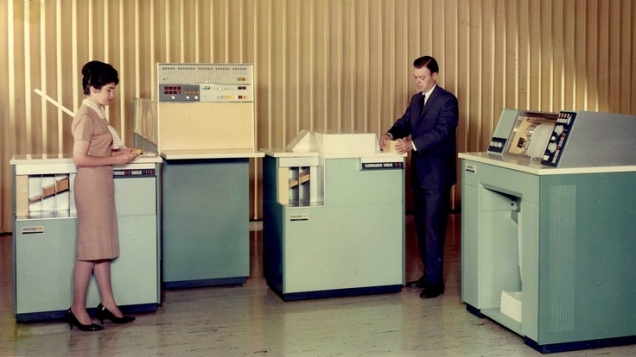
The head of marketing will soon be spending more on IT than the head of IT, so a recent study by Gartner found. Last week at the annual adfest in Cannes, Ogilvy's top creative warned of how too much faith was being put into data and not enough into ideas. This was resulting in well planned and placed ads that don't actually achieve much.
Where is the real value to be found in marketing?
The more things change the more they stay the same. The problem in the past was IT managers spent a fortune, first on hardware and then software to sytemise the running of the business. Whether or not the customers' experience was improved was not the concern of the CIO. You only had to dial 3 for support to know that. The main focus of the CIO was all about having bragging rights his IT budget was bigger than the competitors'.
Now we are seeing marketing managers playing the same game, "my Big Data budget is bigger than yours." Businesses are paying more and more to collect big brother levels of information on people. You've experienced the result like everyone else – being hit with ads on Facebook when all you want to do is see a picture of a friend's fishing trip. This may be how Zuckerberg will try to make an earn for shareholders, it isn't the road to marketing Nirvana. Just like the IT managers of the past, what the customer wants once again isn't the focus.
The constant here is managers within the business concentrating on the business of the business, rather than looking for ways to make a customer's life better. You probably recognise the trap, I fell for it. For several years I paid too much time and money on experienced professional staff and IT consultants to implement and manage programs to systemise my business. None of it added to the power of connecting and motivating, inspiring or creating. It was money spent on smooth bureaucracy for neatness sake and failed to grow my customers' businesses, nor consequently my own.
Rational Vs emotional marketing approach
"Investment" in IT has always been a rational spreadsheet sell to the chief decision maker. How often have you witnessed a marketing department asking for a "brand building" budget lose out to the CIO who could promise a guaranteed ROI from some new IT? Problem is marketers seem to be giving up the fight at the board level for using emotion to connect with customers, instead choosing the easy route of asking for funding for data. Spend X get Y. Yet economic modelling consistently shows the customer is innately irrational, human beings are pre-programmed that way. This is at the heart of getting the best marketing ROI.
Your customers are more emotional when making purchase decisions than rational
The influential role of emotion in consumer behavior is well documented, here is a summary by Antonio Damasio, professor of neuroscience at the University of Southern California –
- MRI neuro-imagery shows that when evaluating brands, consumers primarily use emotions (personal feelings and experiences) rather than information (brand attributes, features, and facts).
- Advertising research reveals that emotional response to an ad has far greater influence on a consumer’s reported intent to buy a product than does the ad’s content – by a factor of 3-to-1 for television commercials and 2-to-1 for print ads.
- Research conducted by the Advertising Research Foundation concluded that the emotion of “likeability” is the measure most predictive of whether an advertisement will increase a brand’s sales.
- Studies show that positive emotions toward a brand have far greater influence on consumer loyalty than trust and other judgments which are based on a brand’s attributes.
So it follows a business that concentrates on chasing efficiency by spending big on data risks failing to connect on the more powerful emotional level.
Challenger brands care most about what the customer thinks matters most
Challenger brands that actually care about what customers want are winning by using the Cloud to remove superfluous steps from the delivery of products and services, often without big IT budgets. One example I know intimately is an Australian first, UNOsmsf, Cloud based Self Managed Super.
The rational customer benefit: More choice, more control, lower fees. We'll be using an emotional truth to appeal to prospective clients: your fund can do better than your mates with more money who are paying through the nose for an average product the big banks want to sell them using big data.
Check out the superannuation challenger brand taking on the banks from the Cloud.
Read More
Top 5 biz management blunders


Have you read any of Robert Gottliebsen's recent articles on the impending 12 billion dollar plane crash coming our way? Australia's purchase of three squadrons of Joint Strike Fighters – 58 at over $100million each is a fine example of the 5 management blunders many businesses tend to make.
5 blunders for management to avoid (& tips on marketing)
Gottliebsen quoted Liberal senator Jensen, a scientist, explaining what a blunder the decision to purchase the JSF is proving to be. Here I paraphrase Robert, with my own warnings on the blunders to avoid when making decisions about marketing::
Rule 1 of management blunders
Ignore expert advice and go with your gut. A decade ago Australia's manager at the top, John Howard, ignored the advice of aviation experts and bought into the development of the JSF. In my experience, being told the CEO doesn't believe in marketing or paying for external advice is more common than finding a boss willing to admit where their expertise ends.
Rule 2 of management blunders
When you make a big decision, those who continue to oppose you need to be pushed aside -- everyone must get with the program. Creativity is stifled by group think, yet it's creative thinking that helps businesses compete on their own terms, rather than taking the category head on.
Rule 3 of management blunders
All staff involved in the decision are ‘looked after’. E.g. In the case of the JSF, Senator Jensen has studied carefully what happened and says "there are too many who get jobs with contractors where they have provided advice favouring that contractor's product.” Advertising is renowned for managers procuring from friends who are designers, family members who know photoshop and printers who give them tickets to the rugby.
Rule 4 of management blunders
Delay as long as possible in telling the people at the top that the decision is wrong. In corporations, big, sudden write-downs are often caused because management down the line keeps putting a good spin on the data to keep their jobs, until finally they have to confess. Or in my experience, they are found out long after they've moved on. One CEO didn't realise that for two years none of my proposals to fix their problems had ever been passed up to him by his marketing manager. It was only after firing the manager he discovered an email trail where my strategies and estimates had been constantly forwarded to her close friend, who was then being commissioned for services beyond their capability at far higher prices.
Rule number five
Obscure the costs with all sorts of creative accounting. In marketing and advertising, this is really easy when so many managers claim to know the cost of everything, when they actually don't understand the value of anything.
The common theme here is the tendency of management to throw staff at problems, at great long term cost, when trusting experts would be better for business.
Read More
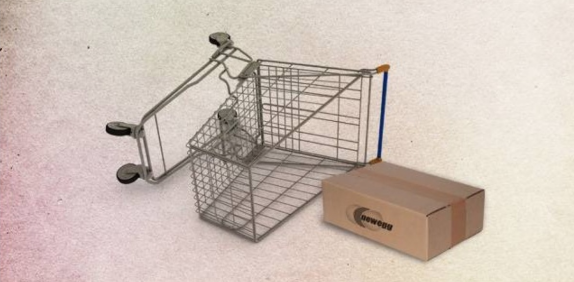
The idea that online retail is about discounts isn't in line with the facts. While margins might be tighter, e-commerce is no longer just about bargains and end-of-line clearances. The latest NAB Online Retail Sales Index shows just how broad Australian retailing has become. Daily Deals sites are stuck at 3% share. The biggest online sales growth stories now are in liquor and groceries.
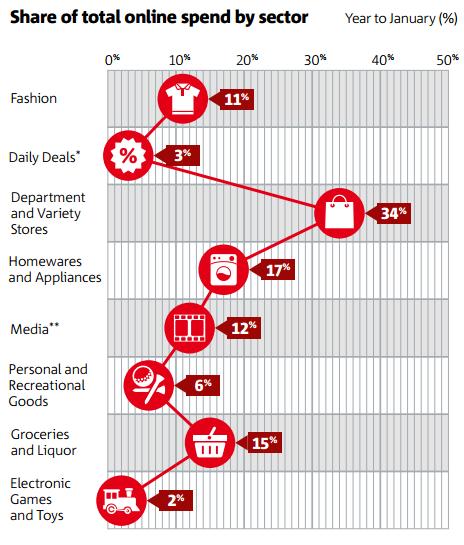
Department stores and appliance retailers the big winners, or losers online?
The mainstreaming of e-commerce can be seen in the leadership of department store products with a whopping one third of online spending. Once slow to adopt, Myer now offers 119,000 individual products online.
Domestic operators still have the lion’s share of online sales at around 75%. Gerry Harvey’s call for a GST on foreign online sales is just noise when you consider he mostly sells homewares and appliances, the second largest online category. I don’t see Australia Post delivering washing machines bought from Best Buy New York via their online store as a threat to Gerry. The threat is internal, his stores are failing to add value to the sales process and Harvey Norman still doesn't appear to have a strategy to compete with local online challengers.
Challenger brands have an advantage online
If anything, e-commerce puts the power back into the hands of customers who want to deal direct with manufacturers. Australian challenger brands, when they make a product that locals actually want, can cut out the blood sucking Coles/Woollies duopoly and the Gerry Harvey’s.
When brands reinvest into marketing a portion of the retailer margins that going online cuts from the delivery chain, they can grow share long term. This way e-commerce becomes a WIN, WIN equation for brand and customer.
An example of this approach is the transformation of a traditional Australian designer manufacturer of compression and sportswear – Quick Response. UNO has helped them transform from a wholesaler at the mercy of retailers to a direct-to-consumer e-business. This challenger brand is now competing with SKINS, (the retail market leader with a high priced foreign made product), by offering superior Australian made garments direct online, at a better price. Check out the QRS compression online store.
The future for online retail marketing
While retail sales generally have been mostly flat, ABS figures show Australian’s spent 27% more online in the year to March than the year before.
The NAB online spend index doesn’t include online shopping paid for by Paypal, transfers or EFTPOS, so the 6.5% of all retail spending measured in the latest report to March 2014 is an underestimate of the reality. Marketers need to view online retail as a growing opportunity for current business growth, not just a nice to have in the future.
Source: National Australia Bank Online Retail Sales Index.
Read MoreTruth in advertising?

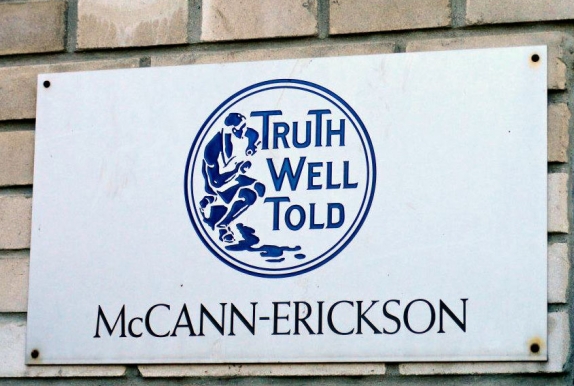
Which professions are most trusted in 2014? Research shows the Australian public rate nurses 91% for ethics and honesty, once again at the top, whereas most professions don't rank well in the trust stakes at all.
No prizes for guessing who rates last at 3%, it's the same profession that has been at the bottom every year since Roy Morgan began their annual "Image of Professions" survey in 1986.
2014 rankings of professions for ethics and honesty
- Nurses
- Pharmacists
- Doctors
- High Court Judges
- Dentists
- School teachers
- Engineers
- Police
- Supreme Court Judges
- University lecturers
- Accountants
- Bank managers
- Lawyers
- Ministers of religion
- Public servants
- Public opinion pollsters
- Financial planners
- Directors of public companies
- TV reporters
- Newspaper journalists
- Business executives
- Insurance brokers
- Stock brokers
- Talk-back radio hosts
- State MPs
- Federal MPs
- Union leaders
- Real estate agents
- Advertising people
- Car salesmen
Source: Roy Morgan annual 'Image of Professions' survey for 2014
Read MoreSince the GFC businesses and investors have struggled to find consistent ways to achieve double digit returns. You can continue to blame the shake out that the credit crunch brought down on our heads, or perhaps the current tough environment is the new normal. The new normal is a world where businesses and governments and media proprietors no longer have control. Everything has been digitised, and thanks to Google and global Internet access from mobile phones at low prices the slevers are now controlled by the public, your customers.
The last decade has seen what Deloitte term the era of Digital Disruption. In a paper last year they identified which Australian industries are facing a short fuse, big bang trashing of their business models. Traditional business models that could control supply and demand and charge a premium have dissappeared or in the case of Delloittes hit list of financial services and are about to.
The businesses that prosper will be those that can embrace the new digital normal. It is the business managers that apply design thinking to their entire way of operating that will survive. The good news for SMEs is they have eless to lose than corporations and also have the management structure to embrace change. The best thing about all this si design thinking makes more money for a business than traditional management approaches. Here are some figures on just how much more profitable design centric businesses have been since the GFC.
Design Thinking has doubled the returns of companies across a range of industries
The Design Management Institute in the US worked together with Motiv Strategies to create a share market index for tracking the returns of businesses that have Design Thinking at the centre of the organisation. Called the Design Value Index, it shows the 15 rigorously-selected companies that understand the value of design beat the S&P Index by a whopping 228% over the last 10 years.
Who are these profit powerhouse businesses and what do they have in common?
Design is an integrated function across the entire enterprise; they invest in design and it shapes the way employees interact and report, management structure is flat or receptive to ideas; experienced design executives are given power to direct design activities; and there is a senior leadership-level commitment to design. Some of the companies on the list won’t surprise you – Apple, Coca-Cola, Walt Disney and Nike. Others might – Ford, Herman-Miller, IBM, Intuit, Newell-Rubbermaid, Procter & Gamble, Starbucks, Starwood, Steelcase, Target and Whirlpool.
Designers are lateral thinkers, utilise their creative leaps
The way designers think is much more open to ideas, random thoughts from diverse sources and then building on these. By starting with the question what does a customer want and what makes them happy the designer is liberating from current accepted practices within a business. They challenge all aspects, collaborating across all the people in a business from sales to complaints, production to procurement. Compare this to control and command structures, like the public service where you aren’t allowed to ask a superior a question let alone challenge what they believe is the way it’s always been done.
Change, rather than wait to be redundant. As Deloitte warns, redundancy is coming sooner rather than later.
Read More
Since the GFC businesses and investors have struggled to find consistent ways to achieve double digit returns. You can continue to blame the shakeout that the credit crunch brought down on our heads, or accept that the current tough environment is the new normal. We now have to operate in a world where businesses and governments and media proprietors no longer have control. Everything has been digitised.
Thanks to Google the information levers are now controlled by the public. In other words, your customers now call the shots.
to Google the information levers are now controlled by the public. In other words, your customers now call the shots.
The last decade has seen what Deloitte term the era of Digital Disruption. In a paper last year they identified which Australian industries are facing a short fuse, big bang trashing of business models. Traditional business management techniques that could control supply and demand and charge a premium have disappeared. You can see from Deloitte's hit list, even industries not used to rapid change like financial services and arts and recreation are about to face significant disruption.
Deloitte's Digital Disruption map
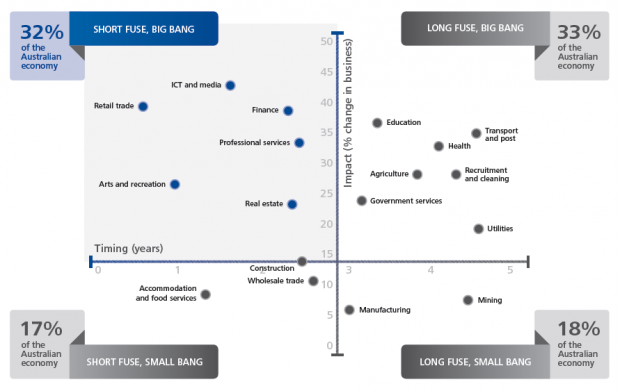
The formula for small & medium business survival in this time of disruption
The businesses that prosper next year and beyond will be those that can embrace the new digital normal. It will be the business managers who apply design thinking to their entire way of operating that will survive. The good news for SMEs is they have less to lose than corporations and more flexibility in the management structure to embrace change.
SMEs are perfectly placed to become tomorrow's challenger brands. The best thing about all this is design thinking makes more money for a business than traditional management approaches. Here is a chart that shows just how much more profitable design-centric businesses have been since the GFC.
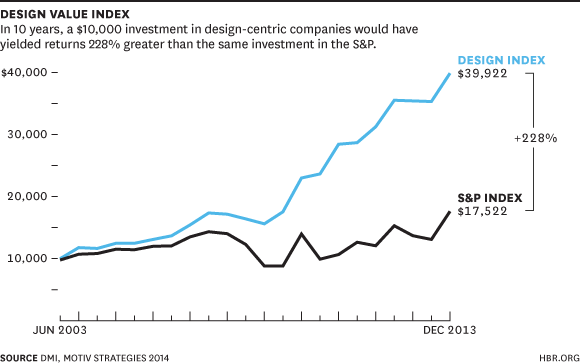
Design Thinking has doubled the returns of companies across a range of industries
The Design Management Institute in the US worked together with Motiv Strategies to create a share market index for tracking the returns of businesses that have Design Thinking at the centre of the organisation. Called the Design Value Index, it shows the 15 rigorously-selected companies that understand the value of design beat the S&P Index by a whopping 228% over the last 10 years.
Who are these profit powerhouse businesses and what do they have in common?
Design is an integrated function across the entire enterprise; they invest in design and it shapes the way employees interact and report, management structure is flat or receptive to ideas; experienced design executives are given power to direct design activities; and there is a senior leadership-level commitment to design. Some of the companies on the list won’t surprise you – Apple, Coca-Cola, Walt Disney and Nike. Others might – Ford, Herman-Miller, IBM, Intuit, Newell-Rubbermaid, Procter & Gamble, Starbucks, Starwood, Steelcase, Target and Whirlpool.
Designers are lateral thinkers, utilise their creative leaps
The way designers think is much more open to ideas, random thoughts from diverse sources and then building on these. By starting with the question what does a customer want and what makes them happy the designer is liberating from current accepted practices within a business. They challenge all aspects, collaborating across all the people in a business from sales to complaints, production to procurement. Compare this to control and command structures, like the public service where you aren’t allowed to ask a superior a question let alone challenge what they believe is the way it’s always been done.
Change, rather than wait to be redundant. As Deloitte warns, a big bang of disruption is coming sooner rather than later for most businesses.
Read MoreHow do you lead your business in the Digital Age?
The answer is in the mail. Australia Post is over 204 years old, but that hasn’t stopped it making the most of the digitised world. At a presentation to business leaders at the AGSM Leading The Digital Enterprise event yesterday, I found Tracey Gosling, a director of Australia Post, the biggest surprise. While the usual suspects, like the Head of Policy at Facebook and an author on Innovation helped open the eyes of the bank managers and bureaucrats in the room to the way generation X and Y want to be treated at work, it was the true stories of change at Australia Post I found most useful.
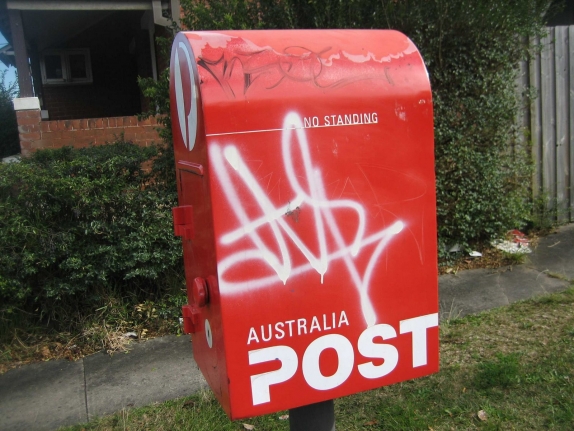
What's the future for AusPost in a digitised world?
Tracey shared real examples of the often simple ways ordinary people in their business have made changes that have worked. They show us what can actually be achieved when the starting point is very grim. Which gives real hope for small and medium sized businesses that aren't as tied down by the inertia of a monopoly like AusPost.
Tracey painted a picture of a vast post office workforce laboring under the emotional burden of the fear of change. Imagine you were a postie, one of my schoolmates from 30 years ago still is. Imagine over the last decade the postie doing the daily rounds would feel the bag of mail on their back was lighter than the week before. And next week it will be lighter still as people stop posting letters. They'd be worrying when will the day come there is no mail to deliver and they're out of a job?
To survive Australia Post has to manage a bigger change to the way customers exchange information than past revolutions like telegraph to telephone, horse borne deliveries to airmail, phone to fax. The Internet has changed everything more significantly than any of those innovations. Manage the change they have.
To quote the Australia Post annual report: “For the 13th consecutive year, we met or exceeded all of the performance standards that relate to our community service obligations. We delivered 95.5 per cent of domestic letters on time or early (against our 94 per cent target) and we increased the number of postal outlets to 4,429 nationwide. Total revenue grew to $5.9 billion and our after-tax profit increased by 10.9 per cent to $311.9 million. This means net profit has grown 21 per cent per annum since we enacted our Future Ready transformation program."
What has AusPost changed to keep up? Nearly everything, they had to. Last year they lost $189 million on mail delivery. AusPost now makes more from servicing e-commerce businesses and other activities that didn’t exist just a decade ago. There are secure 24/7 Parcel Lockers within minutes drive of most homes for out of hours parcel deliveries, digital self serve kiosks in post shops and soon digital I.D. recognition software that will mean documents like banking applications and contracts won’t need signatures by hand.
If a bureaucracy can go digital, so can your business
These changes to a huge and diverse business are making sure it can remain competitive as digitisation changes the world. As with most things in business, change management is being enabled at Auspost from the top. CEO Ahmed Fahour is a case study in the new style of management required for the digital age – leadership by openness, not power. This infographic sums it up nicely.
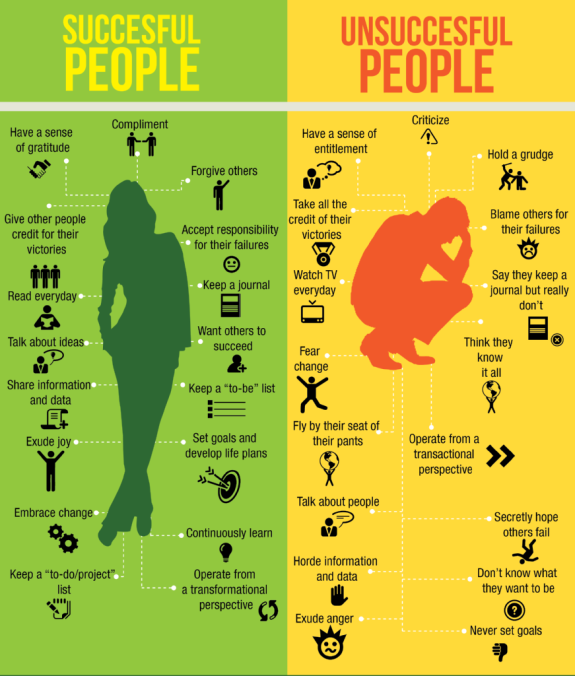
View this image on Pinterest.
Here are some examples of how Ahmed Fahour has let go of control:
1. Let staff fail
Individuals in offices can change their methods behind the counter to see if it works better than current processes without asking prior permission from senior management. If it doesn’t work, no great loss. If it does make an improvement, it’s shared across the organisation.
2. Social media is for everyone
While most government departments still don’t allow social media or even Google to be used in the office, Fahour has let employees at every level of share an opinion on Facebook. Just a few years before only 2 people were officially given the role to manage social media, yet even then there were 15,000 conversations happening on social media each year amongst staff.
Businesses need to recognise they can’t control what staff want, or constantly roadblock how they want to do it. Indeed today, in the words of former Cisco Senior Director Martin Stewart-Weeks, "a network routes around an obstacle." It's the same with staff, they will go around you, or leave.
3. What does the customer want that they’re not getting?
To improve the way they can fulfill for e-commerce customers, staff who had never shopped online were encouraged to do so in work hours. This led to an understanding at many levels of post employee of what online businesses do well and not so well, and discover what shoppers want from the whole order to delivery process. One consequent innovation is the 24/7 Parcel Locker, which means you don’t have to be at home to receive a valuable e-purchase.
4. What can you do that’s new?
Things are changing fast, so what you’ve always sold in the past is less likely to be as attractive to new customers tomorrow. Again, take inspiration from the top postie:
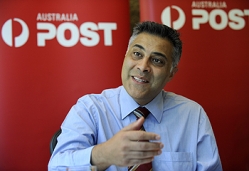 “We capitalised on the boom in online shopping with the Parcel & Express Services segment earning profit of $354.8 million, on the back of 9.3 per cent growth in domestic parcel volumes. And, despite difficult retailing conditions, Retail Services profit again grew to $200.6 million, mainly through adding new financial and identity services.”
“We capitalised on the boom in online shopping with the Parcel & Express Services segment earning profit of $354.8 million, on the back of 9.3 per cent growth in domestic parcel volumes. And, despite difficult retailing conditions, Retail Services profit again grew to $200.6 million, mainly through adding new financial and identity services.”
“Initiatives are all focused on capturing our immediate customer growth opportunities in the digital economy – especially in e-commerce, digital communications and trusted services.”
We are constantly exploring the new possibilities with our clients, it's how we help to keep them growing as successful challenger brands.
Read More
 Making meaningful comparisons as a consumer is challenging, especially with superannuation. Christopher Zinn says we need to understand how to make informed choices when incumbent businesses operate in a "confuscopoly".
Making meaningful comparisons as a consumer is challenging, especially with superannuation. Christopher Zinn says we need to understand how to make informed choices when incumbent businesses operate in a "confuscopoly".
It is a big ‘what if’ because too many businesses profit from the lack of determination of their customers for better products, services and even prices.The public’s desire for improvement is dulled by a widespread disengagement, resignation and inertia that anything they do may actually be much better for them.
And the consumer malaise seems worse in those markets which really count most because of the sums involved: superannuation, health and other insurances, energy such as electricity and telecommunications.
The symptoms are a lack of switching to better offers, which tends to benefit the incumbent above the challenger brand, and even paying over the odds by sticking with the wrong plan and perhaps the wrong provider.
The figures are sobering. The Australian Communications and Media Authority says poor plan choice around telecoms has cost consumers a probably under-estimated $1.5 billion a year.
Superannuation is confusing for customers
The ATO holds more than $18 billion in lost superannuation accounts. And despite more than 11 million Australians are covered by private health insurance less than 40,000 of them switch each year.
The fault is not solely the consumers. The ‘confusopoly’ of the mobile phone market in particular makes meaningful comparisons more than challenging.
Our cognitive biases, which make us particularly vulnerable to decisions around money and cause us to favour the present as opposed to the future, do not serve us well when it comes to assessing strategies around retirement savings.
And the complex and changing rules around health cover and premium rebates tend to drive policy-holders to sit pretty instead of seeking better value.
Of course some consumers are determined and realise a little time and effort in acquiring knowledge of these markets can save significant pain and expense.
But there’s a limit to even their patience and how much effort is worth it for how little a reward. There’s also the issue of expertise and the imbalance of information: as consumers we are amateurs buying from professionals.
We may only purchase a new car every few years, but the sales staff sell them every day, and however canny you are they will always know more about the vehicle, its true value and how to upsell you on various unnecessary warranties.
One way to correct this asymmetry, as it’s sometimes called, is to gather like-minded consumers together and use their numbers as leverage in negotiating better terms.
It’s already happening in specific markets such as energy and insurance as One Big Switch, with whom I used to be director of campaigns, has demonstrated here and overseas.
Another way is selectively reforming markets by regulation. In Australia conflicts of interest with financial planners led to the Future of Financial Advice (FoFA) legislation.
The government is seeking to severely dilute these much needed consumer protections, claiming they are somehow excess ‘red-tape’. In fact they represent a much-needed shark-proof cage for consumers to more safely navigate financial waters.
In the US and UK regulation is helping liberate consumers’ usage data from the back offices of utilities and banks so citizens can employ trusted third parties to crunch the numbers and help them make better decisions.
The determined consumer can take back control
Being determined as a consumer is not just a state of mind, although that helps. In the future it will require the technologies which can bring us together quickly and cheaply to use some people power in markets.
It will also require more consumers to get hold of their own data and then find emerging intermediaries to help them make real sense of the complexity and choice fatigue which bedevils too many markets.
Determined consumers do not need to be told to shop around or read the fine print. They already know that, but they do need help in turning their determination into better decisions.
Christopher Zinn is an independent consumer advocate currently running a campaign to highlight the financial advice protections (www.saveourfofa.com.au). His other initiative is www.determinedconsumer.com.au which is aimed at motivating consumer action. UNO worked with Chris on consumer empowering programmes at CHOICE. He also co-founded One Big Switch as well as being a repoorter/producer at the ABC, Channel Nine and several newspapers.
Read More
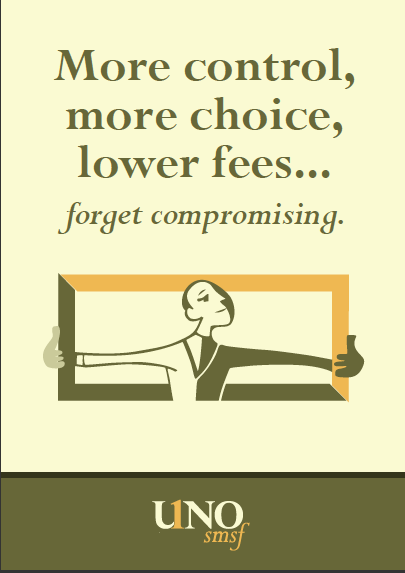



Scan the QR code for our contact details.
Download the Neoreader app.
© COPYRIGHT 2013 UNO marcomms Privacy